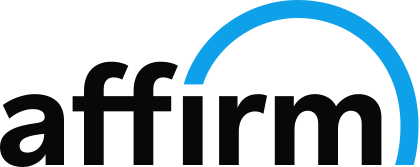
While others ignore the details, craft your cover letter to close the deal.
Most of us know enough to ensure our resume is on point, but too many overlook the value and impact of a well-written and targeted cover letter. Unlike a resume, which lists your qualifications, a cover letter gives you the opportunity to tell your story and explain why you’re the perfect fit for the role. This guide will walk you through each step of creating a powerful cover letter that stands out.
Step 1: Understanding the Purpose of a Cover Letter
A cover letter serves as your personal introduction to the hiring manager. It complements your resume by providing context and highlighting your most relevant experiences and skills. While your resume lists your qualifications, your cover letter connects those qualifications to the job you’re applying for, explaining why you’re not just qualified, but the ideal candidate for the position.
Step 2: Research the Company and Role
Tailoring your cover letter to the specific job and company is crucial. Start by researching the company’s mission, values, and culture. Visit their website, read recent news articles, and explore their social media profiles. Understand what the company is looking for in a candidate by carefully reading the job description. This research will help you align your cover letter with the company’s needs and demonstrate that you’re genuinely interested in the role.
Step 3: Formatting Your Cover Letter
A well-structured cover letter is easy to read and professional. As you already know, this is the basic outline:
1. Header: Include your contact information, the date, and the employer’s contact information.
2. Introduction: Address the hiring manager by name, if possible, and state the position you’re applying for.
3. Body: Highlight your relevant experience and skills in one or two paragraphs.
4. Closing: Summarize your value, express enthusiasm for the role, and include a call to action.
Use a professional font (such as Calibro, Tahoma, or Arial (Times New Roman is the most overused font in resume writing, so I usually recommend to my clients to stay away from it) Go with standard 1-inch margins and single spacing. This ensures your cover letter looks clean and professional.
Step 4: Writing a Compelling Introduction
Your introduction should grab the hiring manager’s attention from the start. Begin with a personalized greeting; if the job posting doesn’t include a name, try to find it through the company’s website or LinkedIn. Avoid generic salutations like “To Whom It May Concern.”
Next, craft an engaging opening sentence. For example: “As an accomplished marketing professional with over 11 years of experience in digital strategy, I was thrilled to see your opening for a Marketing Manager at XYZ Company.” This immediately sets the stage for why you’re a strong candidate.
Step 5: Highlighting Your Relevant Experience and Skills
In the body of your cover letter, align your qualifications with the job requirements. Focus on your most relevant experiences and skills, using specific examples and metrics to demonstrate your achievements. For instance, instead of saying “I have experience in project management,” you could say, “In my previous role at ABC Corp, I led a team of 10 to successfully deliver projects on time and within budget, resulting in a 15% increase in client satisfaction.”
Remember to keep your language concise and impactful. Avoid lengthy paragraphs and focus on clear, strong statements that highlight your capabilities.
Step 6: Showing Enthusiasm and Cultural Fit
Employers want to know that you’re not just qualified, but also passionate about the role and the company. Show your enthusiasm by expressing what excites you about the job and how it aligns with your career goals. Mention any aspects of the company’s culture or mission that resonate with you.
For example: “I am particularly drawn to XYZ Company’s commitment to innovation and sustainability, values that I share and have actively promoted in my previous roles.”
Step 7: Concluding with a Strong Closing
Your closing should reinforce your interest in the position and summarize the value you bring. Express your eagerness to discuss how you can contribute to the company’s success and include a call to action, such as requesting an interview.
A strong closing statement might be: “I am excited about the opportunity to bring my expertise in digital marketing to XYZ Company. I look forward to the possibility of discussing how my background, skills, and enthusiasm can contribute to your team’s success. Thank you for considering my application.”
Step 8: Proofreading and Final Edits
Even the most compelling cover letter can be undermined by typos and grammatical errors. Take the time to proofread your letter carefully. Reading it out loud can help you catch mistakes you might otherwise miss. Additionally, consider having a trusted friend or mentor review it for clarity and coherence.
Crafting a powerful cover letter requires a combination of research, personalization, and attention to detail. By following these steps, you can create a cover letter that not only highlights your qualifications but also showcases your enthusiasm for the role and the company. Remember, your cover letter is your first chance to make a great impression, so make it count.












